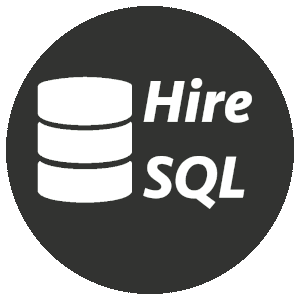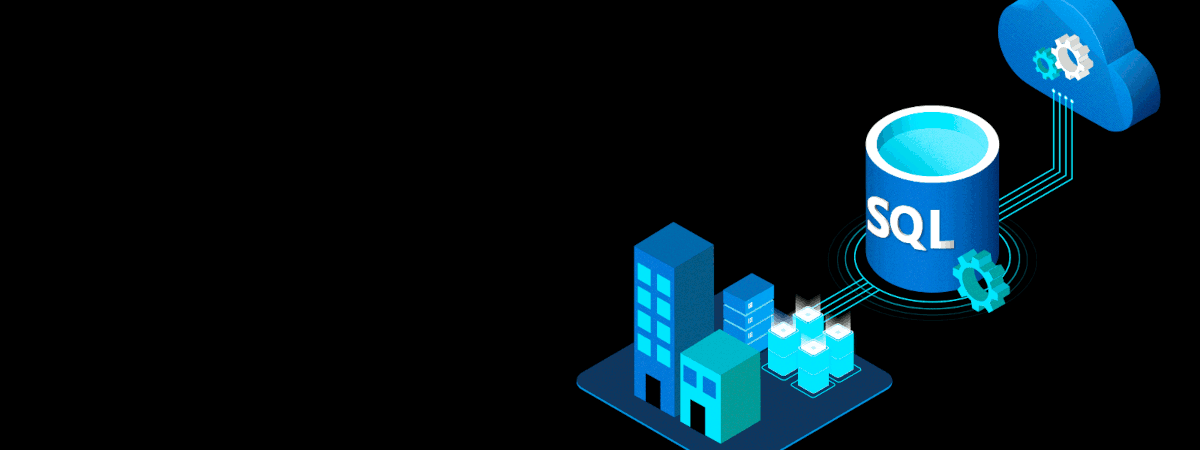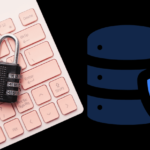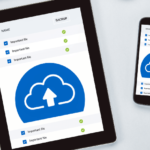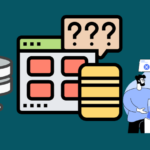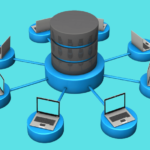
Postgresql vs. NoSQL: unlock the secrets behind these powerful database contenders
Databases, essential in today’s tech world, store information for applications. Two popular types, Postgresql and NoSQL, offer unique features. In this article, we’ll explore their strengths, weaknesses, and best use cases.
Postgresql: Overview
Postgresql, a powerful relational database management system (RDBMS), uses Structured Query Language (SQL) for data manipulation. Open-source and versatile, it supports transactions, subqueries, and advanced data types. Widely adopted, its robustness and flexibility make it a favorite among developers.
Pros of Postgresql
- ACID Compliance: Ensures reliability and data integrity, crucial for transactional systems.
- Data Consistency: Strict schemas guarantee data structure adherence, minimizing errors.
- Flexible Indexing: Multiple index types optimize query performance.
- Concurrency Control: Allows multiple users to access data simultaneously without conflicts.
- Extensibility: Custom functions, operators, and data types allow for tailored solutions.
Cons of Postgresql
- Scalability: Horizontal scaling can be challenging, as it requires partitioning and sharding.
- Complexity: Managing schemas and relations can be time-consuming and difficult.
NoSQL: Overview
NoSQL, a non-relational database type, provides a flexible and scalable solution. Popular among modern web applications, it accommodates various data structures, such as key-value, document, column-family, and graph. NoSQL databases include MongoDB, Cassandra, and Couchbase.
Pros of NoSQL
- Scalability: Horizontal scaling, or adding more servers, is easier compared to relational databases.
- Flexibility: Dynamic schemas accommodate evolving data structures without requiring migrations.
- High Availability: Many NoSQL databases provide built-in replication and fault tolerance.
- Performance: Optimized for write-heavy and high-velocity workloads, such as logging or analytics.
Cons of NoSQL
- Lack of Standardization: Each database has its query language, making it harder to switch between them.
- Weaker Consistency: Some NoSQL databases sacrifice consistency for performance, potentially leading to anomalies.
Comparing Use Cases of Postgresql vs. NoSQL
E-commerce Applications
E-commerce apps need to manage customer data, orders, inventory, and transactions. Postgresql excels in ACID compliance and data consistency, making it a strong choice. However, NoSQL could be used for shopping cart data, user sessions, or caching product recommendations.
Social Media Platforms
Social media apps require handling massive data volumes, user interactions, and real-time updates. NoSQL databases, like Cassandra or MongoDB, support rapid growth and horizontal scaling, making them suitable for these use cases.
Content Management Systems
Content Management Systems (CMS) store and manage website content. Postgresql’s relational model excels at organizing structured data, such as blog posts, authors, and tags. NoSQL databases could handle content personalization, caching, or analytics.
Internet of Things (IoT)
IoT applications generate large volumes of time-series and sensor data. NoSQL databases, like InfluxDB or Cassandra, provide high write and query performance, making them ideal for storing and analyzing IoT data.
Hybrid Solutions: Combining Strengths of Postgresql vs. NoSQL
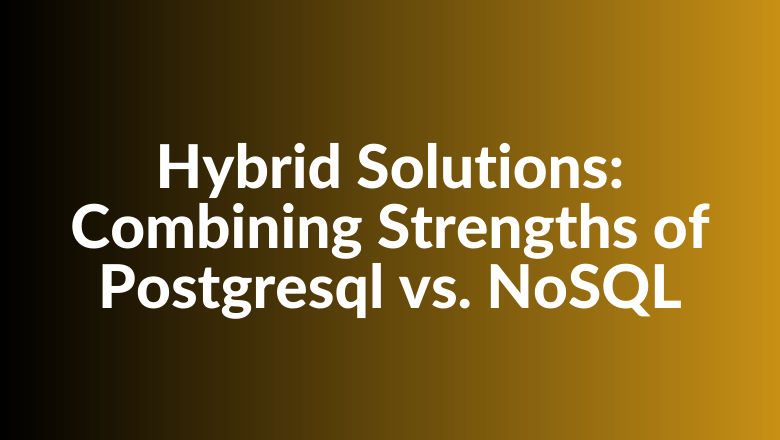
In some cases, combining Postgresql and NoSQL databases can provide the best of both worlds. By leveraging each database’s strengths, a hybrid solution enables developers to optimize performance, scalability, and data consistency.
Polyglot Persistence
The term “polyglot persistence” refers to using multiple databases within a single application. This approach allows developers to choose the most suitable data store for each use case, enhancing overall efficiency.
Example: E-commerce Application
An e-commerce platform could use Postgresql to manage transactional data, such as customer information and order history. Meanwhile, a NoSQL database like Redis could cache popular products, and Elasticsearch could handle search and recommendations.
Security Considerations
Data security is crucial for any application. Both Postgresql and NoSQL databases offer security features, but their implementations differ.
Postgresql Security
Postgresql provides several built-in security measures:
- Authentication: Support for various authentication methods, including password, LDAP, and Kerberos.
- Role-based Access Control: Allows fine-grained control over user permissions.
- Data Encryption: Offers data encryption at rest and in transit using SSL/TLS.
- Auditing: Provides tools to track and monitor user activity.
NoSQL Security
NoSQL databases have varying security features depending on the specific implementation. Some common measures include:
- Authentication: User authentication using passwords or API keys.
- Authorization: Role-based access control to manage user permissions.
- Data Encryption: Data encryption at rest and during transmission.
- Auditing: Tools for monitoring user activity and data access.
Developers must evaluate security requirements and choose a database that meets their needs.
Migration Strategies
Switching from one database to another can be a complex and time-consuming process. Migration strategies should be carefully planned to ensure a smooth transition.
Migrating from Postgresql to NoSQL
- Data Modeling: Redesign data structures to fit the target NoSQL database.
- Data Migration: Export data from Postgresql and import it into the NoSQL database.
- Application Code: Update application code to use the new database’s query language and APIs.
Migrating from NoSQL to Postgresql
- Schema Design: Create a relational schema that accommodates NoSQL data.
- Data Migration: Export data from the NoSQL database and import it into Postgresql.
- Application Code: Update application code to use SQL queries and Postgresql APIs.
Community and Support
Both Postgresql and NoSQL databases benefit from active communities and extensive documentation.
Postgresql Community
Postgresql has a large and active community, offering resources such as:
- Mailing Lists: Discussion forums for users and developers.
- Online Documentation: Comprehensive guides and tutorials.
- Conferences: Annual events for users and developers to share knowledge and experiences.
NoSQL Community
NoSQL databases, being numerous and diverse, have distinct communities for each implementation. Resources include:
- Forums: Online discussion boards for specific databases.
- Documentation: Detailed guides for each NoSQL database.
- Events: Conferences and meetups focusing on NoSQL technologies.
Choosing a database with an active community can provide valuable support, resources, and inspiration for your projects.
Advanced Querying: Postgresql vs. NoSQL
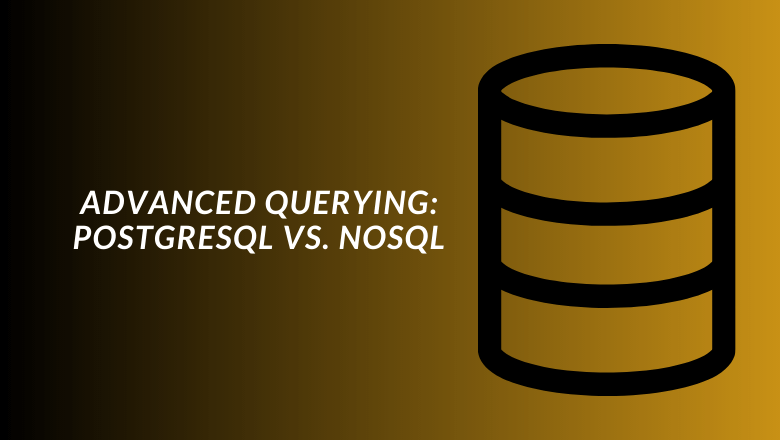
Postgresql and NoSQL databases offer different querying capabilities. Understanding their differences can help developers make informed decisions when selecting a database.
Postgresql: Advanced Querying Features
Postgresql provides a rich set of querying features that cater to complex data retrieval requirements:
- Joins: Combine data from multiple tables based on a common attribute.
- Subqueries: Embed one query within another, enabling advanced filtering and data manipulation.
- Common Table Expressions (CTEs): Named temporary result sets to simplify complex queries.
- Window Functions: Perform calculations across a set of rows related to the current row, ideal for analytics and reporting.
NoSQL: Querying Capabilities
NoSQL databases have varying querying capabilities, depending on their data model:
- Document databases (e.g., MongoDB): Query documents using JSON-like syntax, with support for filtering, aggregation, and projection.
- Column-family databases (e.g., Cassandra): Query by row key or range, with limited support for filtering and aggregation.
- Graph databases (e.g., Neo4j): Perform traversals and pattern matching using specialized graph query languages, like Cypher or Gremlin.
Database Tuning and Optimization
Optimizing database performance is essential for meeting application requirements. NoSQL and Postgresql databases have different approaches to tuning and optimization.
Postgresql: Tuning Strategies
It offers various settings and tools to optimize performance:
- Configuration Parameters: Adjust parameters like memory usage, query planner cost factors, and checkpoint frequency.
- Indexing: Choose appropriate index types (e.g., B-tree, GIN, GiST, or SP-GiST) to improve query performance.
- Query Optimization: Analyze query execution plans to identify bottlenecks and optimize SQL statements.
- Partitioning: Divide large tables into smaller, more manageable parts to improve query performance.
NoSQL: Optimization Techniques
Optimization strategies for NoSQL databases depend on the specific implementation:
- Sharding: Distribute data across multiple nodes to balance load and improve performance.
- Caching: Use in-memory caching to reduce latency and offload database reads.
- Data Modeling: Optimize data structures and access patterns for the chosen NoSQL database.
- Tuning Database Settings: Adjust database-specific parameters to improve performance and resource usage.
Data Warehousing and Analytics
Both Postgresql and NoSQL databases can be used for data warehousing and analytics, but their approaches differ:
Postgresql: Data Warehousing Solutions
Postgresql offers several extensions for data warehousing and analytics:
- Foreign Data Wrappers (FDWs): Access external data sources as if they were native tables, simplifying data integration.
- Columnar Storage: Use extensions like cstore_fdw to store data in a columnar format, optimizing analytical queries.
- Materialized Views: Create precomputed query results to improve query performance.
NoSQL: Analytics and Big Data
NoSQL databases cater to specific analytical requirements, depending on their data model:
- Document databases: Aggregation frameworks (e.g., MongoDB’s) process and analyze data in a pipeline-like fashion.
- Column-family databases: Wide-column stores (e.g., Cassandra, HBase) excel at time-series data analysis and batch processing.
- Graph databases: Analyze relationships and find patterns in connected data using graph-specific algorithms.
Developers should consider their analytical requirements and the capabilities of each database type when choosing a solution for data warehousing and analytics.
Final Thoughts about Postgresql vs. NoSQL
Choosing between Postgresql and NoSQL depends on your specific use case and requirements. Postgresql offers robust data consistency, ACID compliance, and flexibility, making it suitable for transactional systems and structured data. NoSQL databases excel at scalability, flexibility, and performance, making them ideal for handling large volumes of unstructured data or rapidly changing workloads.
As an informed developer, carefully consider each database type’s strengths and weaknesses, ensuring the best solution for your application.
Looking for a top competent Postgresql or NoSQL developer, talk to us.
James is a highly acclaimed author renowned for his extensive experience in the realm of data development and architecture, offering valuable insights to the data industry through his compelling literary works. Residing in the charming city of Oxford, he embarked on an illustrious academic journey at Oxford University, where he delved into the intricate world of computer science. This foundation served as the catalyst for his exceptional career.
After completing his studies, James embarked on a professional path that led him to renowned technology giants. He first honed his skills as a data developer at Microsoft, where he showcased his prowess in designing and implementing robust data solutions. His innovative contributions played a pivotal role in enhancing data management processes, solidifying his reputation as a meticulous and forward-thinking professional.
Seeking new challenges and broader horizons, James embarked on a transformative journey at Amazon Web Services (AWS). In this influential position, he leveraged his profound understanding of data architecture to shape cutting-edge solutions for clients. His leadership and technical acumen enabled businesses to harness the power of cloud computing and revolutionize their data management practices, further solidifying his status as an industry authority.
